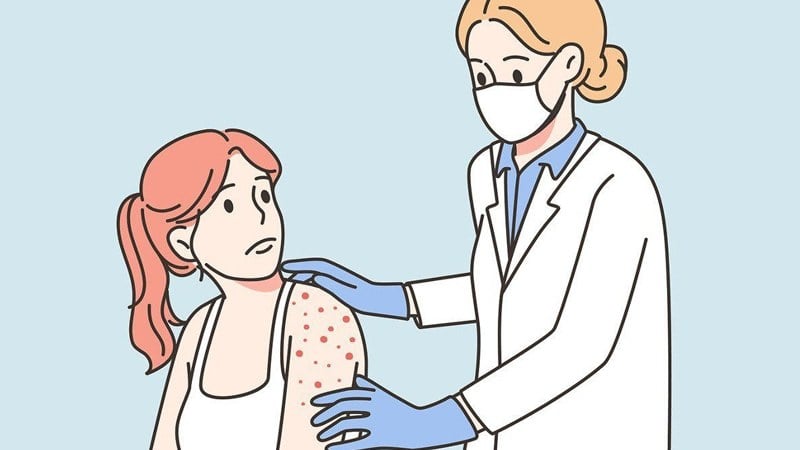Dermatology Nurse: Job Description, Salary, and How to Become One
 If you harbor aspirations for a career in dermatology nursing or are intrigued by the prospect of working in this specialized field, delve deeper into the diverse work environments, fundamental duties, salary considerations, and the pathway to becoming a dermatology nurse.
If you harbor aspirations for a career in dermatology nursing or are intrigued by the prospect of working in this specialized field, delve deeper into the diverse work environments, fundamental duties, salary considerations, and the pathway to becoming a dermatology nurse.
What Is Dermatology Nursing?
Recognizing the skin as the body’s largest organ and its profound impact on patients, dermatology nurses assume responsibility for individuals grappling with various skin injuries, disorders, and wounds. This encompasses a broad spectrum of conditions such as eczema, skin cancer, rashes, hair loss, and psoriasis.

Struggling to meet your deadline?
Get your assignment on Dermatology Nurse: Job Description, Salary, and How to Become One done by certified MDs and PhDs in the USA. ORDER NOW!
The care provided by dermatology nurses extends beyond addressing physical ailments; it encompasses patient education regarding their skin issues and collaborative support for dermatologists during procedures. Additionally, dermatology nurses offer care to individuals undergoing cosmetic procedures, adding a multifaceted dimension to their role.
Work hours in dermatology nursing vary according to the clinical setting. For instance, nurses working in inpatient burn units may be required to work shifts encompassing weekends, while those in cosmetic dermatology may predominantly work on weekdays.
Diverse Work Settings for Dermatology Nurses
The scope of practice for dermatology nurses extends across various healthcare settings, including:
- Dermatology Clinics
- Hospitals
- Academic Medical Centers
- Cosmetic Dermatology Centers
- Dermatological Surgery Centers
- Research and Clinical Trials
- Telehealth
- Dermatology Outreach Programs
It’s crucial to note that the specific work settings for dermatology nurses may exhibit variability based on geographical location, the structure of the healthcare system, and individual preferences. Some dermatology nurses might have the flexibility to work in multiple settings or transition between different environments throughout their professional journey.
Advantages of Dermatology Nursing
Dermatology nursing offers several advantages, including:
1. Regular Work Hours: Providing stability in work schedules.
2. Rewarding Impact: The satisfaction of aiding patients in enhancing their self-esteem.
3. Lower Burnout Risk: Patients often experience more favorable outcomes compared to fields like trauma or critical care units.
4. Higher Salaries: Cosmetic or plastic surgery settings may offer more competitive salaries compared to non-dermatology settings.
5. Lower Stress Levels: Except for environments like burn units or plastic surgery departments, dermatology nursing generally presents a low-stress work environment.
Responsibilities of Dermatology Nurses
The multifaceted role of a dermatology nurse encompasses various responsibilities:
1. Skin Assessments: Conducting comprehensive assessments of patients’ skin conditions, involving symptom evaluation, examinations, and detailed documentation of findings. This includes scrutinizing the skin for abnormalities, rashes, lesions, or signs of infection.
2. Patient Education: Educating patients and their families about skin conditions, treatment options, preventive measures, and general skincare practices. This involves guiding individuals in establishing proper skincare routines, practicing sun protection, and managing specific skin conditions.
3. Treatment Planning: Collaborating with dermatologists and healthcare professionals to formulate comprehensive patient treatment plans. This may entail prescribing medications, recommending lifestyle changes, or implementing topical treatments to manage and improve skin conditions.
4. Procedure Administration: Executing dermatological procedures such as biopsies, wound care, suture removal, and cryotherapy. Dermatology nurses may also assist with cosmetic procedures like laser treatments, chemical peels, or injectables.
5. Dermatological Testing: Conducting and interpreting diagnostic tests such as skin cultures, patch tests, or allergy tests to aid in diagnosing and managing skin conditions.
6. Supportive Care: Providing emotional support to patients coping with chronic skin conditions, addressing concerns or anxieties related to their conditions, and offering resources and referrals to support groups or specialized services when necessary.
7. Follow-up and Monitoring: Scheduling and conducting follow-up visits to track patients’ progress, assess treatment efficacy, and make adjustments to the treatment plan. This includes documenting changes in skin conditions and updating medical records.
8. Collaboration: Collaborating closely with dermatologists, healthcare professionals, and support staff to ensure coordinated care and effective communication regarding patient management, treatment plans, and referrals.
9. Patient Advocacy: Advocating for patients’ needs, ensuring access to appropriate care, necessary treatments, and support services. This may involve coordinating referrals to specialists or assisting with insurance or financial considerations related to dermatological care.
Dermatology Nurse Salary Considerations
As of May 2021, the Bureau of Labour Statistics (BLS) reported a median annual wage of $77,600 for registered nurses (RNs) in the U.S. Salaries for dermatology nurses can vary based on factors such as location, experience, level of education, and certifications.
Top Paying Cities for Dermatology Nurses (according to ZipRecruiter):
1. Ramblewood, PA: $58,191
2. San Buenaventura, CA: $56,994
3. Westlake Corner, VA: $53,872
How to Become a Dermatology Nurse
1. Earn a BSN or ADN:
Aspiring dermatology nurses commence their journey by obtaining a degree or diploma in nursing from an accredited institution. A Bachelor of Science in Nursing (BSN) typically spans four years, while an Associate’s Degree in Nursing (ADN) requires two years for completion.
2. Pass the License Exam:
Successful completion of the BSN or ADN leads to preparation for the National Council Licensure Examination (NCLEX), the licensing exam for nurses in both Canada and the United States.
3. Gain Experience:
Building a foundation in various nursing settings, acquiring skills relevant to dermatology is crucial. The more closely aligned the experience is with dermatology, the more seamless the transition to specialized roles becomes.
4. Complete Certification:
In the U.S., most dermatology nurses learn on the job. Eventually, obtaining certification becomes essential. The Dermatology Nursing Certification Examination (DNCE) offered by the Dermatology Nurses’ Association (DNA) serves as a recognized certification avenue. In Canada, nurses can advance their practice through the Canadian Dermatology Nurses’ Association (CDNA), a Canadian branch of DNA, or by completing the Canadian Nurses Association’s (CNA) Wound, Ostomy, and Continence certification program for RNs and NPs.
Career Paths in Dermatology Nursing
1. Medical Dermatology:
Focused on treating skin diseases/conditions impacting overall health, encompassing treatments for cancer and pre-cancer screening, acne, eczema, dermatitis, moles, alopecia, and more.
2. Cosmetic Dermatology:
Concentrates on enhancing physical appearance, either as part of treating a skin condition or through elective treatments. Procedures include injectables, addressing skin discoloration, mole removal, microdermabrasion, non-invasive fat reduction, laser hair removal, tattoo removal, laser skin rejuvenation, and more.
3. Dermatology Nurse Practitioner (DNP):
A progression for those seeking further education and experience, leading to becoming a dermatology nurse practitioner. The average salary for a DNP is $145,687/year in the U.S. and $122,505/year in Canada.

Dont wait until the last minute.
Provide your requirements and let our native nursing writers deliver your assignments ASAP.
